I know I have talked about it enough but I finally have a hardcover copy in my hands…

Rethinking Virtual Places
Published by: Indiana University Press

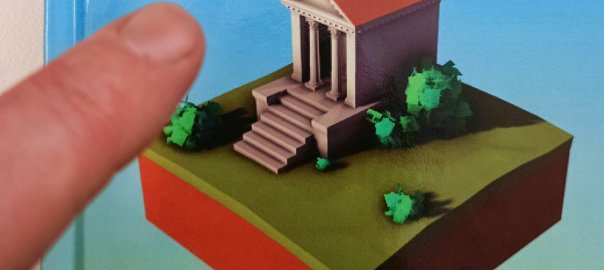
I know I have talked about it enough but I finally have a hardcover copy in my hands…

Published by: Indiana University Press
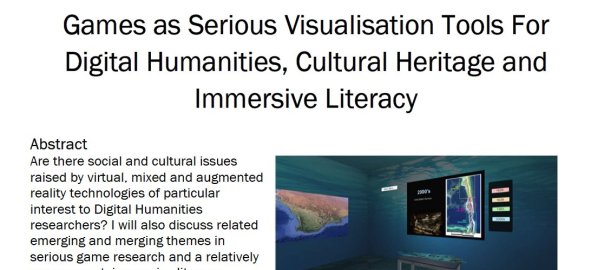
I’m giving a virtual lecture for DHGraz Wednesday 6 October 2021 (tomorrow): “We’re delighted to welcome @nzerik this Wednesday, who will open our Lunchtime Lecture series with an online talk on “Games as Serious Visualisation Tools For Digital Humanities, Cultural Heritage and Immersive Literacy”
More info: https://informationsmodellierung.uni-graz.at/de/neuigkeiten/detail/article/online-lunchtime-lecture-30.-juni-2021-1200-uhr/
Not recorded but slides are here https://www.slideshare.net/nzerik/games-xr-dhgraz-talk-06102021

“Virtual Heritage: A Guide” is published and open access!
Why did we write it? For all those interested in an introduction to virtual heritage, but facing steep purchase costs for academic books, so it is especially suitable for university undergraduate courses. Download what you need, for free.
And given it was written from go to whoa in less than a year and to a tight word limit, I am very grateful to the authors for their time…
Cite: Champion, E. M. (ed.) 2021. Virtual Heritage: A Guide. London: Ubiquity Press. DOI: https://lnkd.in/gNkNWiB. License: CC-BY-NC.
A major game company (I’d say a global company, not in Australia) invited me to quote/ setup an international advisory board in relation to intangible heritage and digital games to meet annually or biannually virtually or in reality. It is a bit of a challenge looking forward to estimate the budget in this time of pandemics, lockdowns, and border control issues.

WEB3D 2021
8-12 November 2021
Virtual Event
The 26th International Conference on 3D Web Technology (Web3D 2021) is organized by the Web3D Consortium and the Institute of Information Science and Technologies (ISTI-CNR). The conference focuses on the 3D ecosystem on the web platform, addressing research, development, and applicative use.
Due to the uncertainties related to the pandemic, the conference will be run as a fully virtual event.
This year’s theme is
::::::::::::::::::::::: A Shared 3D Workspace” ::::::::::::::::::::::::
Working together online has been the staple of this last year. Web3D technologies can create a shared, online workspace, with multiple users able to connect and work together in the same environment.
:::::::::: Conference Tracks
Main Track
The conference seeks to cover the world of 3D on the Web across multiple levels: from low-end layers enabling the use of 3D in browsers to high-level applications. The Main Track is the more technical- and research-oriented part of the conference, focusing on original, innovative content.
Session: Web3D for COVID response
The sudden switch to remote teaching/working/interacting prompted many urgent requests for new tools, systems, and paradigms. And the research community answered.
In this track, we intend to bring to the fore all the work done to virtually shorten the distance across people during the emergency, presenting results, innovative approaches, interaction paradigms, and subsequent evaluations.
:::::::::::::::: Special Track: Digital Fashion in the Web
The future of fashion is presented from Italy, one of the historic centers of fashion. We invite experts in various fields of Fashion who have effectively used Web3D technologies in their research and academic and public educational activities.
In the last years, the Fashion industry has been going through impressive virtualization of its production chain. The Web is a great way to reach the global public: Web3D makes this reaching out interactive.
This special track is dedicated to the results and new challenges to bring the fashion industry in the 3D Web: import of assets, collaborative tools, virtual fashion shows, clothes simulation are just a few examples.
:::::::::::::::: Special Track: Online Legacies and Cultural Heritage
The Cultural Heritage domain is increasingly using Web3D technologies to share data for teaching, research, and dissemination among peers and the general public. In this special track, we seek to explore how 3D web technologies contribute to knowledge production once data have been processed, shared, and used through online platforms. What is the legacy and impact of virtual content in documenting, interpreting, and showcasing Cultural Heritage?
To answer this question, we invite experts in various fields of Cultural Heritage that have effectively used Web3D technologies in their research and academic and public educational activities. Particular emphasis is placed on mobile objects: from archaeological finds to reference collections, up to closed and open online repositories; from pipelines to process 3D models for the Web to visualization and design methods. We are particularly interested in experiences stemming from (but not limited to) scholarly research, teaching, curatorial and museum practices, scientific dissemination, and public engagement in general.
:::::::::::::::: Submissions ::::::::::::::::
Technical Papers
We welcome original scientific works presenting 3D web research and applications, in either Full or Short format (9 or 5 pages, respectively). Submissions will undergo a single-blind peer-review process. Accepted papers will be published in the ACM Digital Library and submitted to major indexing services. Works selected for the Best Paper awards will be invited to submit extended versions to the following journals: Computers & Graphics, Journal of Engineered Fibers and Fabrics, Journal on Computing and Cultural Heritage
Interactive Posters
This year, we would like to push forward the concept of a poster: instead of an A1 sheet of paper, the authors are requested to make the posted available online in an interactive format. Posters are an ideal method to present applicative works, tech demos, ongoing research, applications.
Tutorials
Tutorials are a way to present new tools to students, researchers, and professionals. Short courses, possibly with hands-on examples and interactive materials are encouraged and proposals targeting naïve and entry-level audiences are well welcomed
Industrial Use Cases
Web3D is an ecosystem with a strong Industrial presence. The Industrial Use Cases are a way for companies and practitioners working with Web3D to present their solutions and technologies. An online, interactive version of the submission is encouraged.
Workshops/Roundtables
Web3D conferences have always been an opportunity to connect with other experts. Researchers, practitioners, standard committees, workgroups may propose to organize a workshop on specific themes of interest for the Web3D community. Workshops may be either presentation sessions moderated by workshop organizers or open discussions on a specific topic of interest.
Hanim 3D Competition
Who can create the best animated-to-music 3D humanoid? We seek for talented animators who want to show their work and win a prize by submitting their creations to the competition.
3D Logo Competition
We are looking for talented 3D artists and designers to jazz up the 2021 Meeting!
The logo and its author(s) will be presented at the opening ceremony and will have the opportunity to present their logo to the audience in a short talk.
Submission deadlines:
Papers: July 30
Interactive Posters: September 3
Tutorials: July 30
Industrial Use Cases: July 30
Workshops: July 30
Topics
Topics of interest include but are not limited to:
● HTML5 3D, WebGL, X3D
● 3D data formats, compression, transmission, and streaming
● Web-based rendering, advanced shading
● VR/AR
● 3D content creation, authoring, modeling
● Web-based Geometry Processing
● 3D printing
● 3D API, middleware, toolkits, frameworks
● AI for Web3D
● Human modeling on Web3D
● Semantic Web
● Cloud-based services for large-scale datasets
● Shared virtual spaces, collaborative environments
● Virtual humans, avatars, motion capture
● 3D repositories, marketplaces, asset galleries
● Mobile platforms
● 3D web-based teaching facilities
● Multi-modal 3D interaction paradigms, 3D navigation, gesture, natural interfaces
● Visual analytics
● Diffusion and adoption of 3D Web technologies, comparative studies, historical perspectives, WWW integration
● Novel interactive 3D web applications in all areas and sectors such as entertainment, education, training, cultural heritage, digital twin, medicine, military, smart manufacturing/industry 4.0, information & data visualization, science, geographic information systems (GIS), digital globes, subsurface exploration, and mining, integrated marine data management and visualization, building information modeling (BIM), and architecture.
More information
All the instructions, updates, and the link to the online submission system can be found on the conference webpage:
All questions about submissions should be emailed to program2021@web3d.org
Web3D 2021 Conference Committee
General Chairs: Fabio Ganovelli, Carol Mc Donald
Organizing Chairs: Francesco Banterle, Marco Potenziani
Program Chairs: Marco Callieri, Yvonne Jung
Special Track chairs: Fashion
Yordan Kyosev, Camilla Olson, Emma Scott, Inga Dabolina
Special Track chairs : Cultural Heritage
Loes Opgenhaffen, Martina Revello Lami, Nicolò Dell’Unto
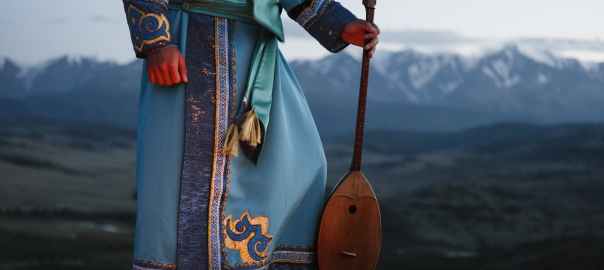
If you have or know of digital games that helped in the “regeneration” of intangible heritage, as well as related organizations, projects and websites or organizations, please let me know…I have been asked to present on this topic on Monday 5 July to overseas gaming companies and academics..
Here was my initial beginning list (woefully incomplete but will soon expand):
I am going to include Never Alone. There are at least 6-12 in my head that I need to review to see if they really were “regenerating” intangible heritage..
CFP Web3D: “A Shared 3D Workspace” Virtual Conference (web3d.siggraph.org)
The goal of the conference is to share innovative and creative ideas about web-based interactive 3D applications, including content creation, 3D printing, fabrication, publishing technologies, web tools, annotation, VR/AR, rendering, and many others. This year the conference will be held in full virtual mode, next November 8-12, 2021.
Here the important dates:
July 30 submission deadline
August 2 bidding deadline
August 31 reviews assignment
September 1 reviews due
Dear Rosa and Andrea (and Michael)
Thanks to the colleagues and co-authors who helped inspired me to edit a concise book for students that will be open access (i.e. free PDF downloads).
Virtual Heritage: A Guide will be available on Thursday 22 July 2021 at https://www.ubiquitypress.com
I’d appreciate any feedback from staff or students for future editions.

I have been informed, that if there are no major holdups the above will be available as a free online book from Ubiquity Press in July 2021. Cover image courtesy of Michael Carter.
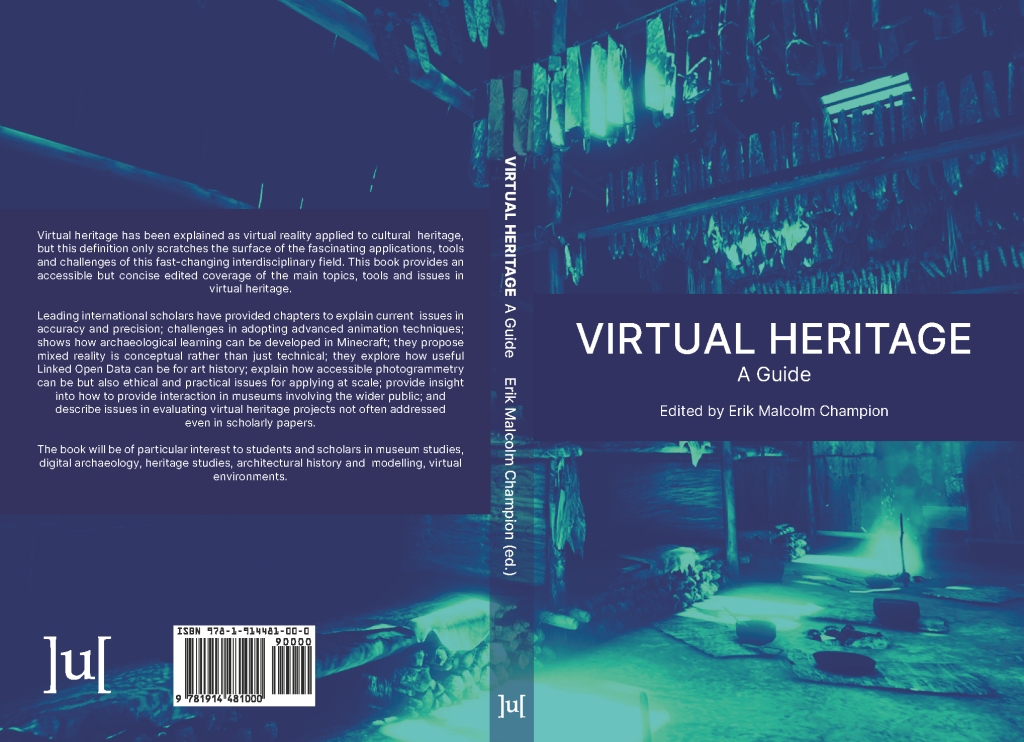
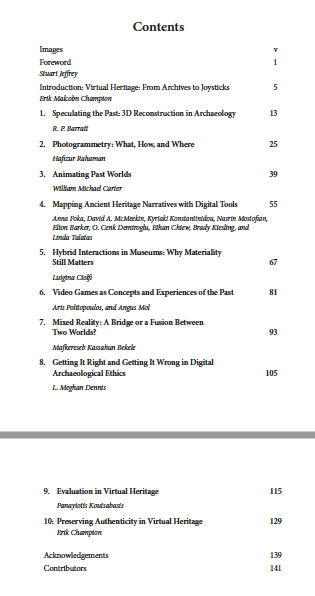
For a Digital Learning Futures unit, I created a prototype website on gitbook with resources for Immersive Literacy (and XR via AFrame run and edited inside CodePen) as a potential teaching unit.
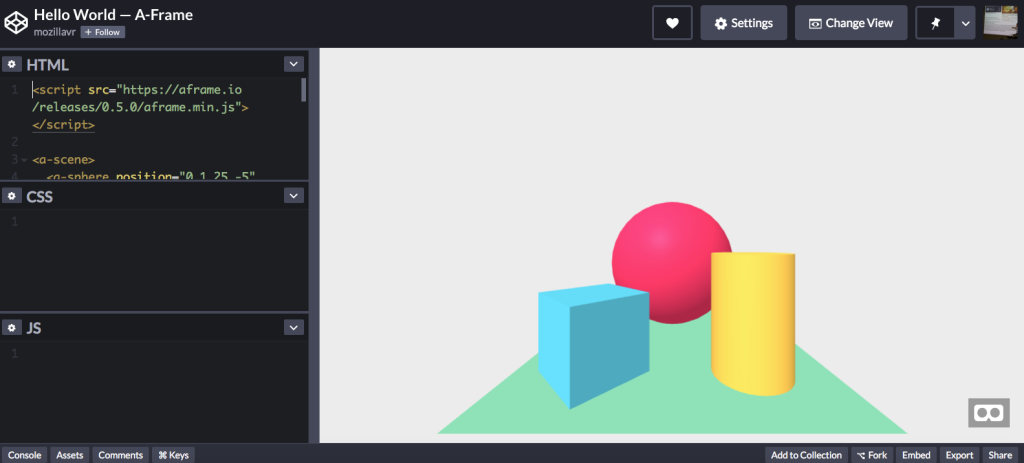
I also wrote a report (which won’t go online for now) but I’d like to thank the academics, students, teachers, librarians, and heritage practitioners, who provided feedback.

“Workshopping Board Games for Space, Place, and Culture” revised chapter, authored with Juan Hiriart, for “Playing Place” (edited by Medina Lasansky and Chad Randl, MIT Press) sent off today. Each chapter has a 1000 word limit, I believe. Took me some time to trim this! Great to work with Juan on a chapter, I think our different strengths blend well. When (or if?) the book appears on MIT Press I will add another post, the list of authors and topics looks really good, possibly essential reading if you are into boardgames, or are not, but want to know why so many people are …
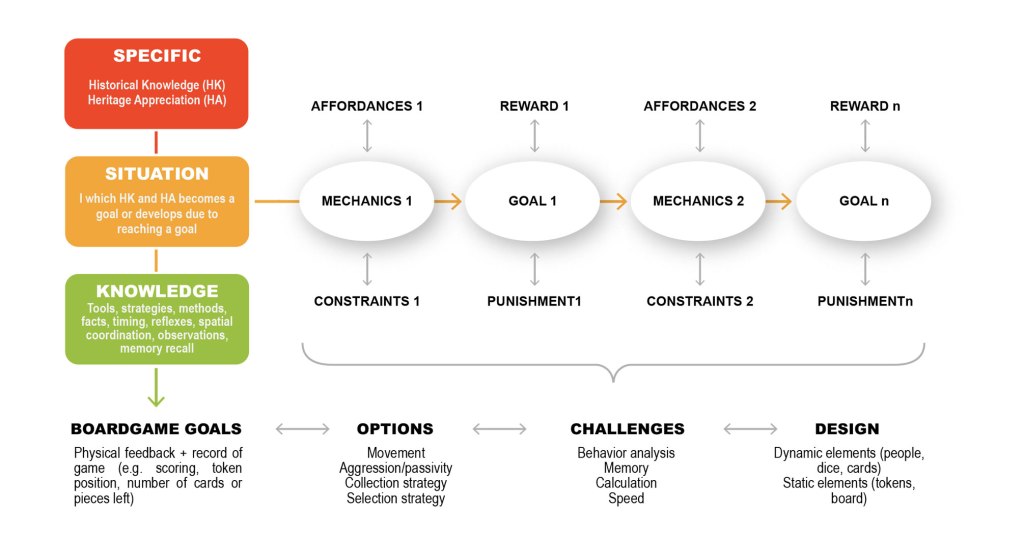
Conveying built heritage values and historical knowledge through boardgame design may seem an odd decision. Communicating space, place, and culture through play is a challenge let alone through a medium inherently incapable of evoking the direct experience of inhabitation and architecture as a spatial art. Boardgames are engaging, social, quick to make, and fast to learn, intuitive or nuanced. From the complex to the spontaneous, boardgames can be effective, visceral tools for cultural immersion, challenging cultural assumptions and preconceptions, encouraging discussion and collaboration between players, provoking insight and enjoyment with simple props or intricate rules.
The following explains our experience hosting participative design workshops with historians, archaeologists, and heritage professionals. In small groups of three to four people, participants determine the design decisions, discussing and solving problems that often arise in an iterative process where historical research, game design, and play-testing both blend and butt heads.
This is our proposed draft chapter (7500-9000 words) for a book on medieval modding within a game (Elder Scrolls V: Skyrim).
Ear Zow Digital, Australian National University, University of Western Australia
Terhi Nurmikko-Fuller, Australian National University
Katrina Grant, Australian National University
Elder Scrolls V: Skyrim, through its rich modding possibilities, has great potential as a teaching and learning tool. The world of Skyrim, although “pseudo-medieval”,[1] can, through the use of mods, aim for a level of historical accuracy comparable to many scholarly digital 3D reconstruction projects. These types of projects are now widely accepted as a vehicle for a new way of thinking about old topics, and as a valuable prompt for engaging students. The advantage of using Skyrim is that the historically informed mods can be combined with sophisticated game mechanics to immerse and inspire students as procedural, contestable, and reconfigurable simulations. Through playful exploration, students can investigate the game world and engage with both the historically-informed and fantastical elements. But they can also become designers, and investigate historical developments through the creation of new assets, modified game mechanics, and social storytelling. Designing simulations is a further learning experience and Skyrim’s Creation Kit is thus also a pedagogical tool.
In this chapter we will explore ways in which Skyrim can be used and modified to explain, through play, three related aspects of medieval society: culture, architecture, and landscape. We will then discuss the modding capability of Skyrim, and conclude with some suggestions for how future Elder Scrolls games and game mods could be leveraged as a teaching and learning tool.
[1] von Lünen, Alexander, Katherine J Lewis, Benjamin Litherland, and Pat Cullum. 2019. Historia Ludens: The Playing Historian. Vol. 30. New York, USA: Routledge.

The below is an essay for a digital learning futures class. If the paper receives good feedback and interest I may try to develop it for a journal (or subsection of a book I am planning on critical virtual reality).
This essay suggests a modification of theoretical digital literacy frameworks to ensure they are suitable for designing educational (serious) games for the GLAM sector (using libraries as my initial focus). While not a librarian, I train people to create game prototypes for more engaging ways of communicating history, heritage, and digital collections (often found in Galleries, Libraries, Archives, and Museums-the GLAM sector).
I wish to develop a framework for game design to better assess what is learnt by end-users (game prototype participants) and game prototype designers (in this case, librarians). My concept of immersive digital literacies is discussed and applied to a review of software tools for the development of serious game prototypes.
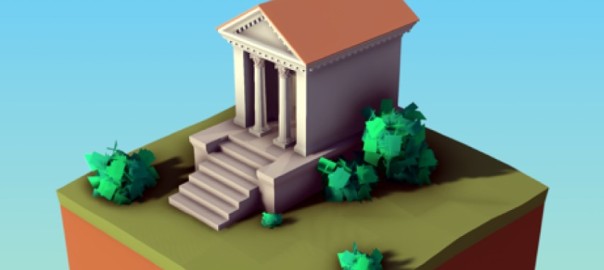
Books to be on the way

Google reminded me of a 2017-18 summer student intern project I supervised 3 years ago. I asked Corbin Yap to calibrate Unreal to larger screens (as with the French intern hybrid reality project I have not written this up although Corbin wrote an excellent report on how to do this).
The screen is 3 metres high and 8 metres in diameter, forming a near half-circle of approx 179 degrees, designed by Paul Bourke in 2013. It can also handle stereo (which Corbin did not have time to adjust the display for). Funding by Curtin Institue for Computation. Corbin was hosted in the library makerspace, great people to work with. Presentation was, I believe, 16 February 2018. Yes I wanted to port my Palenque models but the then-new version of Unreal would require a complete rebuild.
If I have the chance to teach game design again I would greatly appreciated having access to a similar environment that is accessible and immediate for game content. I have many ideas for this.

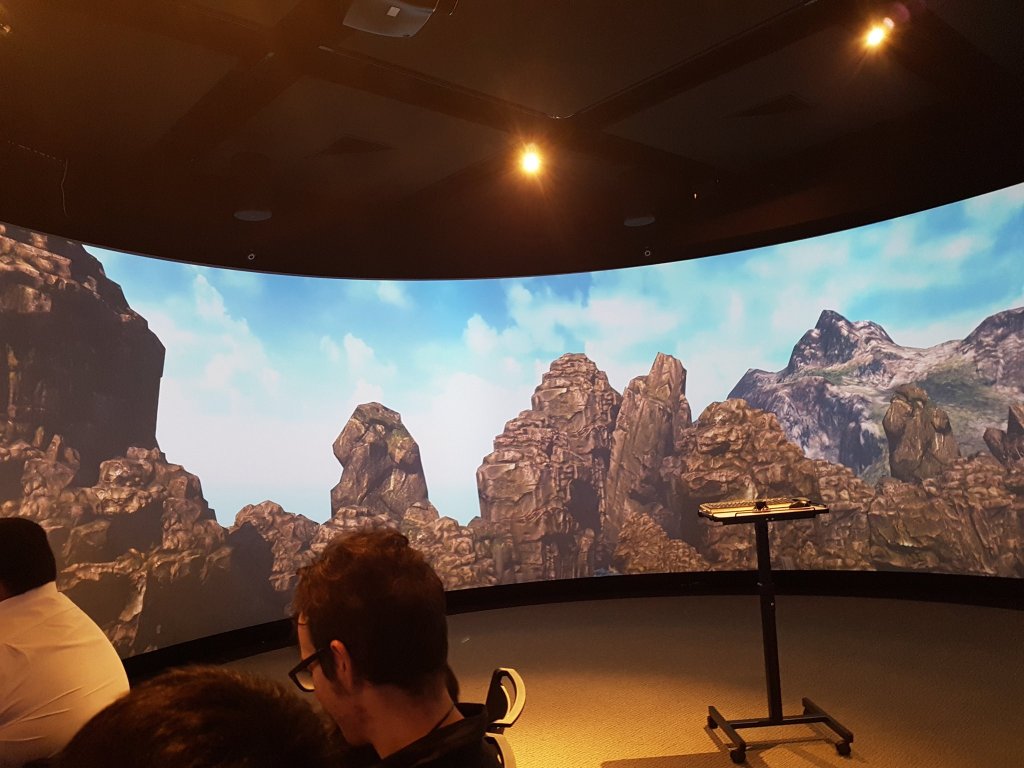
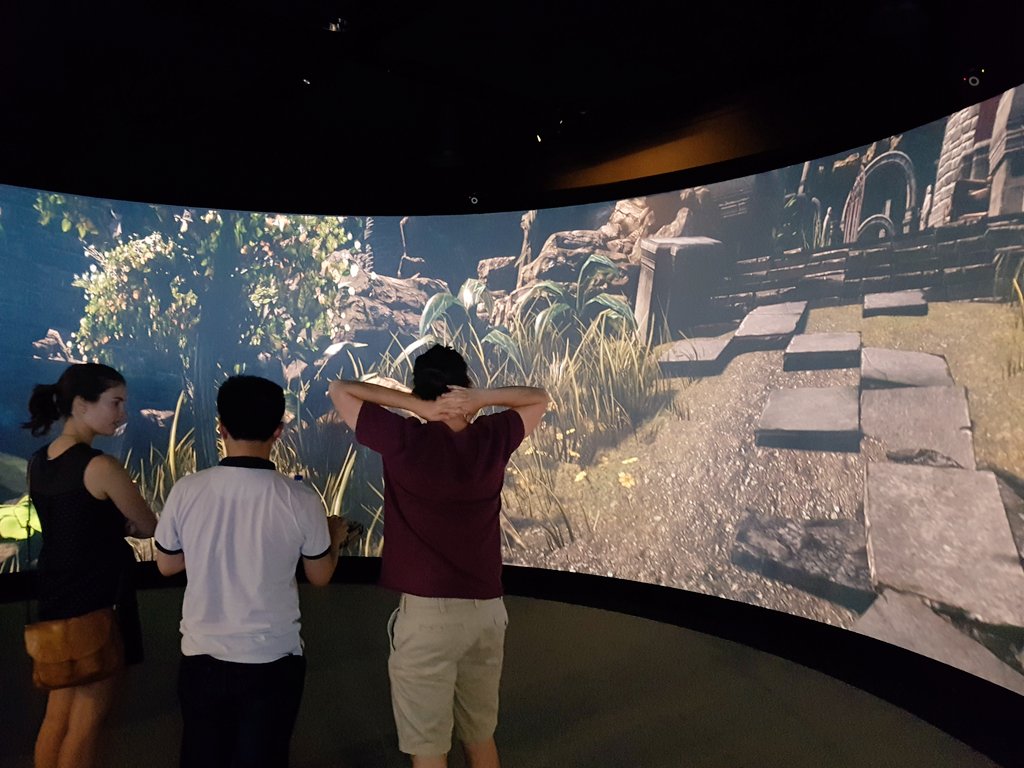
I have started an 18 chapter 25 author edited book project with De Gruyter (Video Games and the Humanities series) and Dr Juan Hiriart as co-editor. I hope to publish it in 2022. Confirmed authors are from Canada, USA, the Netherlands, Germany, Belgium, Finland, Australia, New Zealand, and the UK. The aim is to explain how the Ubisoft Assassin’s Creed Series can and has and could be used in the classroom, museum, or gallery (or as escape space). De Gruyter and Ubisoft historians have been very encouraging. I’d love contributions from the Caribbean or Middle East but very happy with what we have going forward.
There is some possibility of related online learning materials being made available.
Alternative title: Assassin’s Creed: History’s Playground or a Stab in the Dark?
NB This is not the final chapter order.
Virtual Archaeology Review declared my and Dr Rahaman’s 2020 paper “Survey of #3D digital heritage repositories and platforms” their paper of the year.
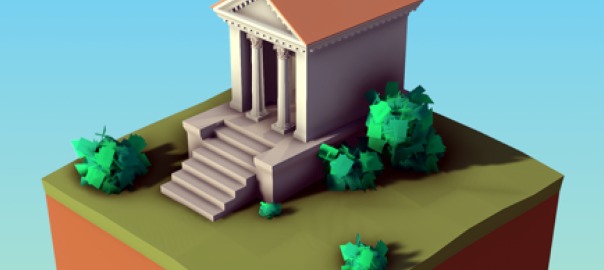

Was one of two book covers possible and I think due to some email confusion they didn’t choose my preferred cover but I really appreciate permission by Dr Anthony Masinton to use his rendered image. The publisher of Rethinking Virtual Places will be Indiana University Press, via their Spatial Humanities Series.

Have sent out a proposal to people who use the above game series in the classroom and/or write about it. Have spoken to Ubisoft about this so possibly can work with historians and archaeologists working with Ubisoft as well.
Authors: Will be an ongoing negotiation process, from abstract/title to publisher and external reviews (depending on the publisher).
Audience: Would be useful if it can be used in a classroom (perhaps university-level undergraduate) but with some thoughtful articles.
Content: How Assassin’s Creed evolved in terms of history and simulation, how it is seen (inside and outside Ubisoft) in terms of its potential in education, heritage and tourism. Indeed a book I am co-editing has a chapter on Assassin’s Creed and screen tourism and I have been tasked to write it! But for this project, I would be very happy to get a conversation going between game designers, consultants, historians, academics and game design teachers.
Focus: How could Assassin’s Creed change or create more flexibility for use and reuse and input from these sectors? How do the scholars and designers see new ways of using games to learn about aspects of history that would be of interest to Ubisoft in particular and game companies in general?
Language: I think I should find a co-editor and possibly French-speaking, would it make sense to have French language chapters and or a French version?
Publisher: I don’t have funds for open access publisher fees but ideally it would be (at least in part) free on the web so it could easily be picked up by classrooms. Update: have received some interest already.
Timing: We are looking at a mid to late 2021 final submission by authors so the book might have to appear in 2022.

My presentation slides for virtual The Interactive Pasts Conference Online 2 (TIPC2), (held 5-6 November, notionally, at Leiden) are on slideshare.
The twitch stream for the conference is at https://www.twitch.tv/valuefnd (my talk from yesterday is on there somewhere).
This paper explores Assassin’s Creed: Odyssey as a way to explore idyllic historic landscapes and heritage sites with some degree of questing and simulated danger. It applies Assassin’s Creed: Odyssey in two ways, as discovery tour option mode and as a metaphor to explore in more general and speculative terms how questing and historical dilemmas and conflicts could be incorporated into both fan tourism and cultural/historical tourism (Politopoulos, Mol, Boom, & Ariese, 2019).
Keza MacDonald views Assassin’s Creed as a virtual museum, Ubisoft regards it as the recovery of lost worlds: “ “We give access to a world that was lost” said Jean Guesdon (MacDonald, 2018). “Discovery Tour will allow a lot of our players to revisit this world with their kids, or even their parents.”
Origins’ Discovery Tour mode “promises” educational enlightenment (Thier, 2018; Walker, 2018); Odyssey’s additional Story Creator Mode (Zagalo, 2020) adds personalized quests. Beyond the polaroid fun of sharing landscape selfies with other players and ancient history voyeurs across the Internet, there is also the prospect of “Video game–induced tourism: a new frontier for destination marketers” (Dubois & Gibbs, 2018). Plus physical location VR games. Game company Ubisoft created escape game VR and virtual tours inside physical exhibitions such as Assassin’s Creed VR – Temple of Anubis (Gamasutra Staff, 2019). Is there a market for historical playgrounds as virtual tourism?